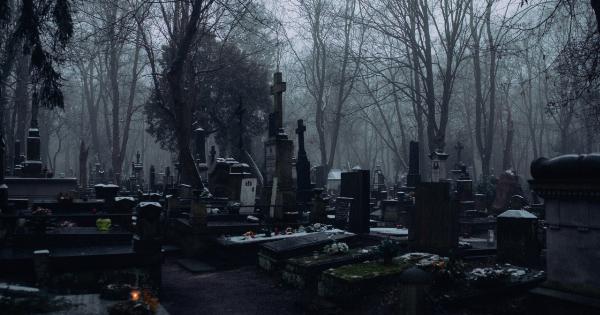Candles are an essential element of human life that have been used for thousands of years in various forms. World Harmoff Day is an occasion that celebrates and acknowledges the history and significance of candles.
Candles have been an integral part of human life for centuries, and due to their versatility, they continue to be used extensively today. This article will provide essential information about candles on World Harmoff Day to help people understand the importance of this historical object.
The History of Candles
The history of candles can be traced back to the ancient Egyptians, who used candles made of beeswax, tallow, and other animal fats for lighting and religious ceremonies.
They also used candles for symbolic reasons, such as celebrating the birth of a child or expressing gratitude to the gods. The ancient Romans also used candles made of beeswax and tallow, but they were predominantly used for ceremonies and religious rituals.
During the Middle Ages, candles became more common in households and churches with the introduction of improved techniques for manufacturing them. Candles were made of tallow, beeswax, and spermaceti wax, which was derived from sperm whales.
The use of candles spread rapidly in churches during this period, and they became a crucial element of Christian worship.
In the 19th century, the invention of kerosene lamps and gas lamps reduced the importance of candles, leading to a decline in their popularity.
However, the electric bulb revolutionized the lighting industry, which had a significant impact on candles’ production and usage. Today, candles are widely available and used for various purposes, such as decoration, lighting, and aromatherapy.
The Science Behind Candles
Candles are made of wax, which has a solid form at room temperature. When heated, the wax melts and becomes a liquid. The wick is a central component of a candle that serves to conduct the heat from the flame to the wax, allowing it to melt and vaporize.
This vaporized wax forms the flame that produces light and heat. The wax’s chemical composition determines the properties of the candle, such as the flame’s size, heat intensity, and scent.
The two primary types of wax used in candle-making are paraffin wax and natural wax. Paraffin wax is a petroleum by-product that is readily available and affordable. It has a lower melting point and produces a bright, steady flame.
Natural waxes such as beeswax, soy wax, and palm wax are derived from natural sources and are more environmentally friendly. They have a higher melting point and produce a softer, warm glow.
The Different Types of Candles
Candles come in various shapes, sizes, and designs, and are used for different purposes. Some of the common types of candles include:.
Pillar Candles
Pillar candles are cylindrical in shape and do not have a container. They come in various sizes and are usually designed for long-lasting use. Pillar candles are perfect for home decor and can be used in any room for ambiance and mood lighting.
Taper Candles
Taper candles are long and slender and come in various lengths and colors. They are usually placed in candlestick holders and are used for decorative purposes, such as in dining settings.
Votive Candles
Votive candles are small candles that come in a container. They are often used in religious and spiritual ceremonies but can also be used for decoration.
Tea Light Candles
Tea light candles are small, circular candles that come in a metal or plastic container. They are often used for short-term lighting, such as during dinner parties.
Container Candles
Container candles are candles that come in a container, such as a jar or a tin. They are often scented and can be used for decoration and aromatherapy.
The Uses of Candles
Candles have numerous uses beyond lighting, such as:.
Home Decor
Candles are an excellent addition to any home decor, providing ambiance and warmth to a room. They can be used in different areas, such as the living room, bedroom, and bathroom.
Religious Services
Candles are a significant component of many religious services, symbolizing spirituality, hope, and devotion. They are commonly used in different religions, such as Christianity, Judaism, and Buddhism.
Aromatherapy
Candles are often used in aromatherapy, providing a calming and soothing ambience to homes and spaces. Scented candles are designed with essential oils that offer various health benefits, such as stress relief and better sleep.
Celebrations
Candles are often used for celebrations such as birthdays, weddings, and anniversaries. They add a celebratory feel to the occasion and are often used for decoration.
Candle Safety Tips
Candles pose a potential fire hazard if not used safely. It is essential to follow these tips to ensure that candles are used safely:.
Never leave candles unattended
Candles should not be left burning while unattended. Always ensure that the flame is put off before leaving the room or going to bed.
Keep candles out of reach of children and pets
Candles should be placed out of reach of children and pets to avoid any accidents.
Keep candles away from flammable materials
Candles should not be placed near flammable materials such as curtains, clothing, or papers. Ensure that they are placed on a stable and heat-resistant surface.
Use candle snuffers to put off candles
Candle snuffers should be used to put off candles instead of blowing them out. Blowing candles out can cause the hot wax to splatter and increase the fire hazard.
Conclusion
Candles are a significant component of human life and offer numerous benefits beyond lighting. On World Harmoff Day, we celebrate and acknowledge the historical significance of candles and their continued relevance in modern times.
With this essential information about candles, we can appreciate this ancient object and use it safely and productively to enhance our lives.































